The language of connected and autonomous technology has shifted over the past 12 months from “could and should” to “will happen”, yet the legislative framework is still dragging behind the pace of technological change.
That’s the forthright view of Ella Taylor, head of future of mobility at the Department for Transport’s Centre for Connected and Autonomous Vehicles (CAVs).
“It was hypothetical. We said combined technologies could transform cities and towns, it should mean safer roads, it should remove car parking,” Taylor told a packed Westminster Energy, Environment and Transport Forum session on next steps for intelligent mobility.
“This year, we can say that it will happen. There will be more autonomy and greater granularity of choice in transport modes.”
Yet, the UK is lagging behind other markets, both in legislation and in culture change, which could stifle progress towards smart cities where integrated transport options bring about reduced congestion, lower air pollution, greater ease of access and safer streets.
“Car sharing has not taken off in the UK – we are reluctant to share – but it has elsewhere in the world,” Taylor says, adding “electric scooters, skateboards and hoverboards are challenging the way we look at transport”, but at the moment they cannot be used – “you’d be breaking the law”.
“As part of our regulatory review, specifically into automated vehicles (AVs), we’re looking at the range of options that we would have as a policy toolkit, to make sure that with the fast development and the capabilities of these vehicles, we are reviewing their impacts,” Taylor says.
“We’re updating our legislation and we are updating our code of practice (for trialling AVs), to evolve with the technology. We know the technology is pushing that boundary, and so we’re reviewing the code of practice to say these now are the steps you need to take to make it safe.”
The Government Office for Science was responsible for the delivery of the recent Future of Mobility report which provides insight into how technology and data can improve people’s lives over the long-term, looking out to 2040.
However, it isn’t just technology which is changing travel behaviour; it’s also societal. A good example is the dramatic growth in online shopping over the past decade, which has fuelled a massive rise in home deliveries. In addition, home- and flexible-working are on the rise.
Societal changes combined with technology is transforming how and why people travel.
Understanding the user is crucial when determining which types of technology will be successful, and these vary dependent on location.
In cities, mobility as a service (MaaS) solutions will dominate; for towns, autonomous public transport could prove the winner, offering efficiency and cost benefits; rural areas will need to gravitate towards digital services, such as on-demand and sharing.
“Whichever geographical lens we look through, a smart transport system underpinned by data will require harmonised local, regional and national standards,” says Jonathan Keating, senior transport and infrastructure adviser, Government Office for Science.
Keating stresses the need to consider freight transportation and the intelligent mobility of goods. It is, he says, often overlooked in planning.
“In the past 15 years, we’ve seen a sharp rise in van use. So vans will be key going forwards. But, data is sparse and this makes long-term planning difficult,” he adds. “Interventions that balance freight alongside passenger transport and land use will be needed, and I think the National Infrastructure Commission’s on-going freight work (interim report – www.nic.org.uk/publications/ 3730/) will provide interesting insights into this space.”
The Government Office for Science has developed four plausible transport futures looking to 2040 which consider critical uncertainties around users’ willingness to share data and adopt new technologies and the extent to which transport will be shared or exclusively used.
Four transport scenarios for 2040
‘Trends unmodified’ is a scenario where the Government is reactive to change, limiting the benefits of technology to transport.
Here, private car use hits record levels, with limited public transport and car share.
“In ‘greener communities’, social environmental aspects of mobility are given priority over new technology and choice,” Keating says.
This results in car clubs and ride-share overtaking the number of trips in privately-owned cars by 2035, with road charging the norm and nationwide MaaS available. Only blue-badge holders can use autonomous vehicles privately.
In ‘individual freedoms’, the public demands control, freedom and independence over their transport but are concerned about data privacy. Here, long distance travel has fallen but local travel has increased due to trust concerns,
with car ownership reaching record levels.
“In ‘technology unleashed’, there’s been a deregulation in transport and related industries, while rapid technological progress is dominated by the private sector,” Keating says.
Technology unleashed predicts 80% of journeys by AVs, with parcel deliveries by drones in rural areas and an obesity problem due to inactivity caused by AVs, which hit the road in 2021.
The four models reveal the conflicting choices faced by legislators, service providers and the public, which may require some compromises.
Many questions remain, such as how tightly data use is constrained, should sharing behaviours be incentivised, should there be a national provision for the transport system, how should new technologies be introduced and what happens if demand is flat.
“How do we ensure the benefits are felt by all citizens, avoiding winners and losers, and how do we consider users, freight and land use in the same system?” asked Keating.
“Now is a time of unprecedented change. There is a window of opportunity to move towards a better transport future, learning lessons from the past and shaping the future, and so now is the time for decision-makers to act.”
Nowhere will the changing environment be felt more keenly than by the companies operating fleets. They are having to come to terms with a new era of automation, robotics, computing, digital intelligence and connectivity in the build-up to smart cities. And quickly.
There is widespread disruption coming from new entrants and private sector innovation. There are new business models, for example, car-makers shifting to service provision. But there are also many definitions of what makes a smart city, as well as the role of the various stakeholders, such as Government, infrastructure providers, service providers, local authorities and the public.
These challenges need to be addressed, according to Wolfgang Schuster, technical director, Intelligent Mobility, at Atkins.
“There is an economic growth challenge, for example, multimodal, on-demand services versus increased congestion, and we’ve seen that already through the Uber-effect in London. There’s a key challenge about when to start regulating without stifling innovation,” says Schuster.
“There’s a question around social acceptance, balancing quality of service versus privacy and trust. There’s a challenge around inclusivity, the many complex user requirements versus the real needs of users and wider society. How do we achieve the correct balance between the two?
“There’s a challenge around standards and interoperability, for example, whether we should centralise data or whether we should use a decentralised approach; there’s a key question of how to ensure interoperability and accessibility to this data when it is needed.
“And then there’s a challenge around resilience. How do we ensure resilience in a digitally connected world where many functions of society, including safety critical functions, will be dependent on the availability and integrity of the data between stakeholders that have potentially very different levels of security requirements?”
Local authorities need to be preparing now for intelligent mobility, so that it evolves as an integral part of the city rather than in isolation. It relies on developing a robust ecosystem which optimises the entire transport system to avoid potential disruptions and modal siloes.
It’s about transformation change, which means everything changes, says Paul Campion, chief executive officer at Transport Systems Catapult.
“If, and when, autonomous vehicles arrive, they will change everything,” he says.
However, the most important element of CAVs right now is the C – connectivity. Most new cars have an IP address; for others, the moment someone gets in with a smartphone, the car becomes connected. In Campion’s view, this will generate the most change.
Forget modes of transport, they simply fulfil journeys. He predicts the death of the bus, as we know it, replaced by other shared transport.
“Shared transport, multi-occupancy vehicles, are fundamental to our future, we need more of that not less of it, but words like ‘bus’ potentially constrain our thinking,” Campion says.
The near-future of mobility will not be delivered by spending money on infrastructure. The £28 billion allocated to road investment will touch less than 1% of the 250,000 miles of roads over the next five years.
The same is true of vehicles: it will take a decade or two to convert the UK vehicle parc to electric, for example.
“It’s about the services: how we use this stuff to deliver services,” says Campion. “That’s the thing we can affect in the next three-to-five years. And over the longer term it’s data; that’s the thing that enables us to make the biggest difference.”
He adds: “The 20th century saw the democratisation of transport outcomes. One hundred years ago, very few people could afford to travel the way that we all do now.
“The next few decades will see the democratisation of seamless travel: I want the complexity to go away. That is the future of mobility.”
Testing times for CAVs
There are six consortia test beds in the UK, supported by Meridian:
* Midlands Future Mobility, looking at smart infrastructure.
* Millbrook Culham, testing CAVs on semi-controlled but realistic environments.
* Trusted Intel CAV with MIRA and Coventry University, testing vehicles to their limits.
* Applus Idiada, looking at highways and rural testing at Bruntingthorpe.
* Smart Mobility Living Lab, testing city driving.
* ConVex with Bosch and Jaguar Land Rover, on connected vehicledata sharing.
Ride-share will cut traffic, finds Addison Lee
Last year, Addison Lee led a consortium looking into attitudes and business models for ride-sharing. These are its findings.
The project introduced four levels of service:
1 The minibus, a low-cost flat fare (£2.60), similar in price to the tube.
2 The assist, a low-cost flat fare (£2.60), for people requiring services related to disability where there would be some kind of steward on board to provide assistance.
3The standard (£5 minimum), similar to the private hire model with a minimum fare and an additional cost per kilometre.
4The executive service, a higher minimum fare (£6.50) for a more luxurious vehicle and shorter waiting times as well as the ability to have solo trips.
Those services were applied to three blueprints:
1 The accessibility blueprint – low cost transport for all. Demand was high with 31,500 passenger journeys per day, mostly short trips. The only two services that worked were minibus and assist because they had to be low-cost transport. However, it drew too much demand away from public transport, particularly buses.
2 The convenience blueprint – greater convenience at a higher price. Addison Lee removed the minibus service and added the standard and the executive. Demand fell to 9,000 passenger journeys per day, primarily because of the higher cost of usage.
3 The combined blueprint brought accessibility and convenience together. The cost of the minibus increased by 90p to try to prevent drawing demand from public services. Passenger journeys rose to 17,500.
Addison Lee’s conclusion was that the combined blueprint was the best option, with journey times falling by around 53%. It also modelled a higher cost of parking which resulted in a 38% reduction in trips, saving space equivalent to 61 tennis courts.
The taxi/courier company added in some autonomous vehicle (AV) modelling, which found that 85% of people were willing to use an AV. There was lots of confidence in the technology and the regulatory and insurance frameworks.
However, there was much less willingness to share an AV with others. Just 46% of people were willing to share, with women least willing. But when a steward was introduced, that willingness to share increased.
EVs will play a crucial role with AVs, according to Addison Lee head of regulatory and external affairs Andrew Wescott.
“If we don’t deliver AV and EV simultaneously, we might find that road congestion and emissions increase and that wouldn’t be desirable,” he says.

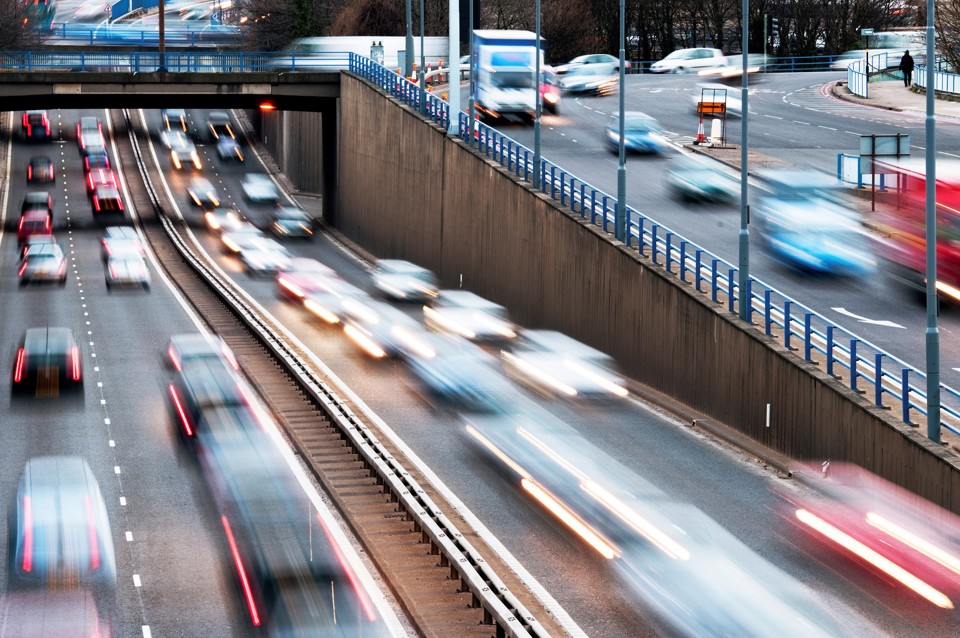



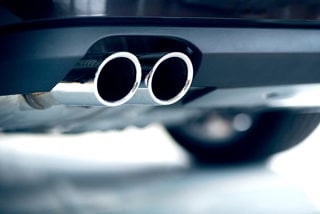
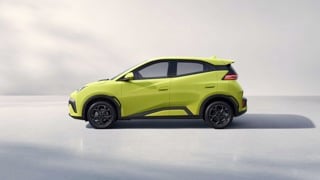

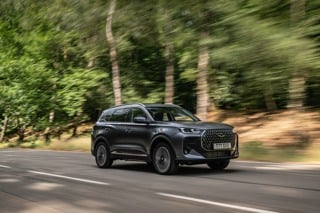
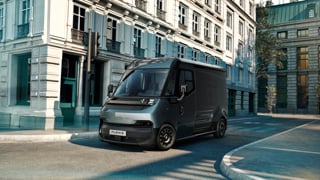












Login to comment
Comments
No comments have been made yet.